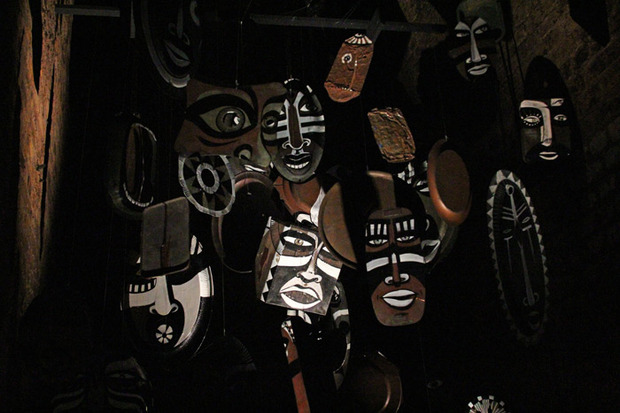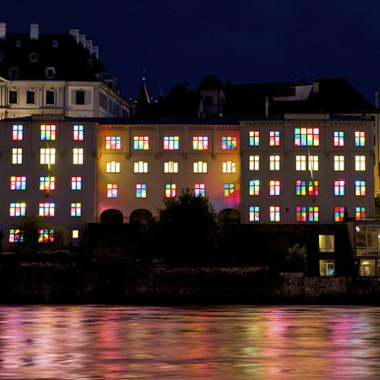Bedlam at the Old Vic Tunnels
Steve Lazarides and HTC host an underground exhibition of insane “outsider art”

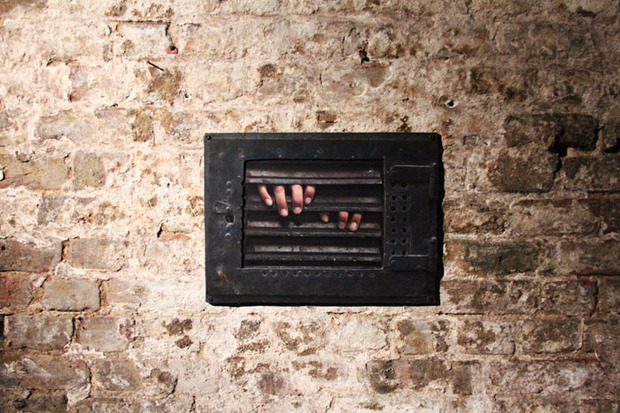
While some believe London’s infamous Bethlem Royal Hospital to have shuttered years ago, it is, in fact, still open. Gallerist Steve Lazarides gave us a tour of his latest show deep under London’s streets, taking an artistic evocation of the famous London insane asylum, which does indeed seem unnervingly alive, in the dark, dank spaces of the Old Vic Tunnels.
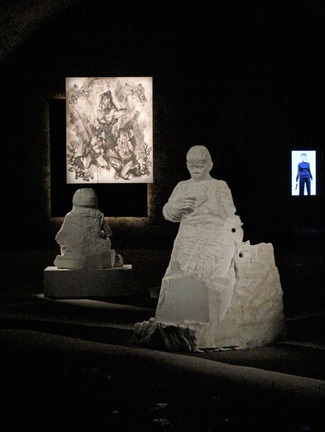
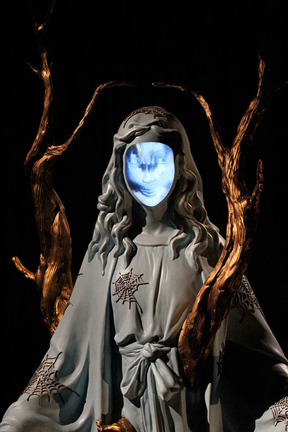
Lazarides’ latest show, called “Bedlam,” is haunted by fantastical sights like an ecstatic crystalized Saint, an electric chair ready for use, hands peeping out of air vents, bloodied straightjackets and an elderly lady with a gun murmuring, “I love you,” over and over again. Sponsored this year by HTC smartphones, Bedlam is the third in a trilogy of annual events during Frieze Art Week that has seen Lazarides populate the cavernous space of the Old Vic Tunnels with an extraordinary array of provocative “outsider art.”
Prior to “Bedlam,” it was Hell’s Half Acre, interpreting Dante’s Inferno, in 2010 and Minotaur, exploring the Greek myth, in 2011. “It’s quite ambiguous,” Lazarides says. “You have Bedlam, the mental institution, but you also have ‘bedlam’ as the dictionary definition of chaos and pandemonium. Different artists have taken different things from it.”
“Bedlam the hospital was open from 1247 or something. Over time it just got absorbed into other health trusts,” says Lazarides, delighting in the thought of this controversial institution of insanity still existing in today’s society, albeit in a radically different form. “For 400 years it was run like a fiefdom, by one family,” he says. “It was a tourist attraction. You come, pay your penny, go look at the mad people.” Now, rather more soberly, the Bethlem Royal Hospital works in partnership with King’s College London Institute of Psychiatry.
“For this show I wanted to make a piece that romanticized the whole idea of Bedlam,” says participating artist Antony Micallef. We met the artist standing by his enormous hanging canvas of epileptically writhing, bare breasted women. The frenetic figures are framed by sketched floral 18th-century plasterwork.
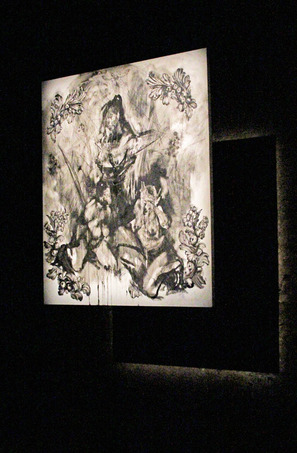
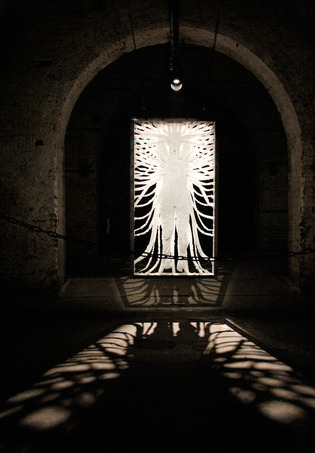
“I wanted to make something decorative,” says Micallef. “With beauty you bring the audience in and then you can show them the dark side.” Appropriately, his painting casts a very large black shadow on the wall behind it.
Also blurring the boundaries between beauty and insanity is Tobias Klein‘s crystalline sculpture “The Ecstasy of Saint Teresa.” He says, “The story of Teresa is somewhere exactly between insanity and religious elevation. It’s described that she was pierced by a ray of light, feeling both pain and pleasure, in an orgasmic religious experience.”
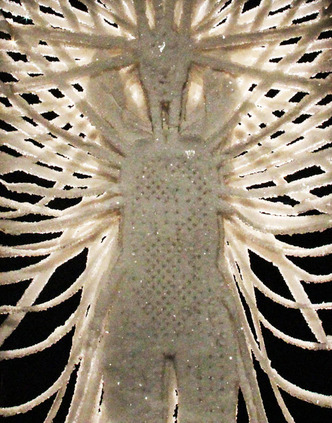
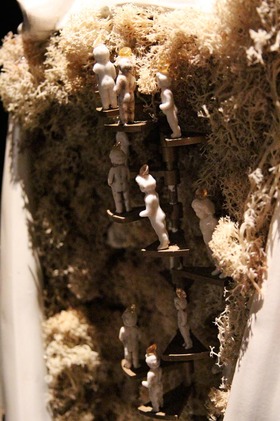
Klein’s sculpture brings Saint Teresa into the modern scientific world in its hi-tech creation. Six slices of a 33-year-old woman’s MRI scan on fabric were dipped into a tank of aluminium sulphate for six days in the tunnels, crystallizing a moment of insanity. The question for Klein with a show entitled “Bedlam” is; “Where do you position this mental state?” While Teresa was classified as a Saint, “Luckily for her,” Klein says, “she could also, just as easily, be a mental case.”
The warped religious experience continues further along the tunnel from the “Ecstatic Saint Teresa” with Tina Tsang‘s sculptures entitled “Lady Psychopomp.” Lazarides described these tortured figures of the Virgin Mary as “a marriage of Catholicism and a South American slave religion, which is related to voodoo.” The Virgins, whose faces are video screens, are shown with branches piercing their bodies and minute figures eroding their spines. Each of their flickering facades represents one of the five elements.
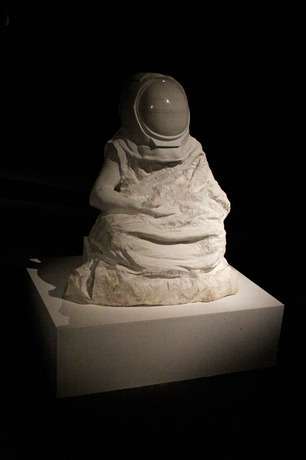
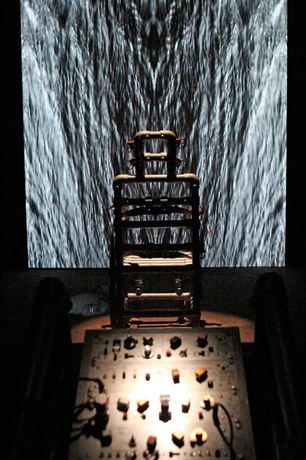
The transcendental experience is echoed throughout the show, from Tessa Farmer‘s Cosmic Cloud of animals that have been shot into space to Klaus Weikopt’s white marble, cross-legged Buddha wearing an astronaut’s helmut. Likewise, video artist Doug Foster explores both negative and positive ideas of transcendence with two neighboring works. First with Brainwasher, an electric chair that threatens to send charged volts through its inhabitant in front of a rippling liquid silver projection. Then, more peacefully, with Psychotron, a circular mandala-like video projected on the ceiling. From underneath visitors to the asylum can lie down on a circular astroturfed bench and be momentarily calmed from the madness by an endless stream of cool blue kaleidoscope images.
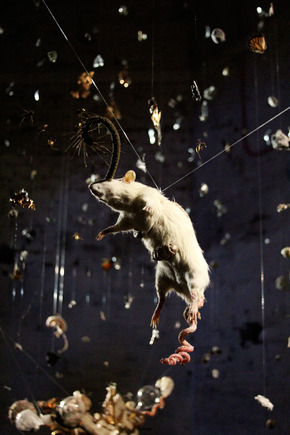

However, you can’t stay relaxed for long as ramping up the tension in the next tunnel is the “Bedlam Beat.” This installation by London-based French artist ATMA whirrs like an incessant drill. In collaboration with HTC, ATMA has created a pulsing giant organ, colonized by HTC smart phones, electrical wires and flashing lights.
ATMA describes the Bedlam Beat as a “new syndrome where technology is taking over your organs,” like when you feel the phantom buzzing of your phone in your pocket—you think you have a call, but you don’t. His work is an examination of our increasing anxiety around technology and its domination over our lives. An addiction, which, like the noise of the Bedlam Beat, might drive you crazy.

The insanity of Bedlam is Lazarides’ suitably frenzied farewell to the Old Vic Tunnels. “I have to decide what I’m going to do next,” says Lazarides. “I’ve done the tunnels now. I’ve done down. It’s got to the stage where I fancy something new. Next year, I think I’m going to go up!”
Bedlam at the Old Vic Tunnels runs through 21 October 2012.
Images by Leonora Oppenheim
